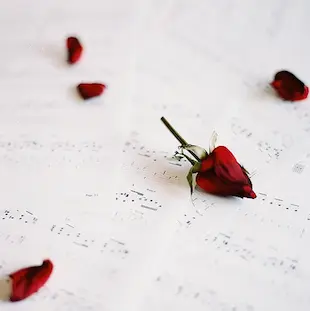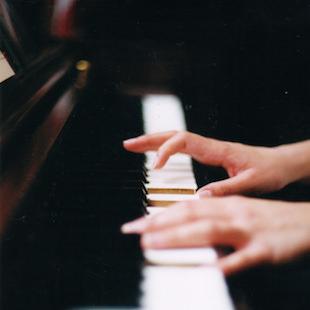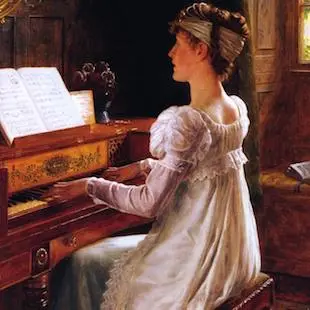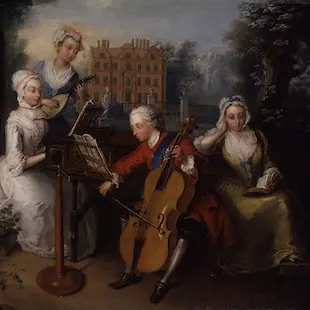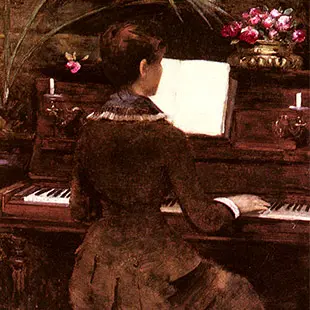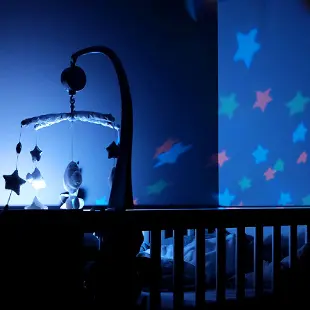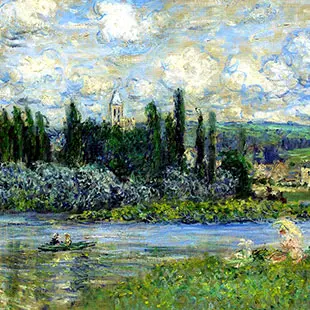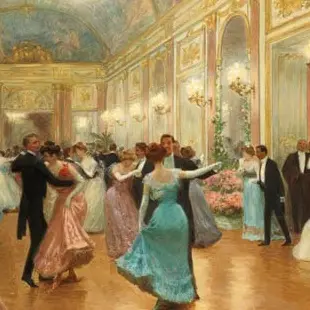The 14 Classical Piano Pieces Every Musician Should Know
With centuries of history behind it, classical music deserves a spot on every pianist's playlist. Here are some of the most famous piano pieces from Baroque to Romantic.
Last updated on 01 Aug. 2024
Classical music has an essential role in any player's repertoire. This isn't just for tradition's sake—classical music has influences in every genre. Schubert is credited with the first verse-chorus structure song we know so well, and the origins of jazz can be traced back to Bach (pun intended). Learning classical music will not only widen your knowledge of different styles, it will drastically improve your playing.
Note: For simplicity's sake, we use the word classical when referring to music from the Baroque, Classical, or Romantic eras. This would be blasphemy to any music academic, but it's an easy shortcut to start you off. We've outlined the differences between these eras with an in-depth article you can read here.
Here's a selection of 14 pieces from the Baroque era to the Romantic period. If you're returning to playing after learning as a child, many of these will be familiar to you. This by no means covers every composer, but it will give you a great starting repertoire. As always, all of this music is available to learn in the flowkey app.
14. Johann Pachelbel – Canon in D
A wedding favorite
A canon is a piece where a melody is imitated and layered with counterpoint voices. This is technically an “accompanied canon” as it includes other melodies that build to create a rich texture, even when played solo at the piano.
Pachelbel's "Canon in D" was popular during his lifetime in the late 1600s, but lost popularity until it was rediscovered in the 1960s. The distinctive 8-bar progression has been taken on in many forms by rock and pop artists, while the original form of the piece is a mainstay at weddings.
13. Johann Sebastian Bach – Prelude No. 1 in C
Hypnotic, broken chords
It's essential to be able to play a little Bach, not simply for his technical mastery, but for his ability to inspire new players even now. “Prelude No. 1 in C” is the first work from his collection The Well-Tempered Clavier, which he wrote “for the profit and use of musical youth desirous of learning.”
Read: Johann Sebastian Bach: The 8 Pieces Pianists Should Know
Hopefully you're “desirous of learning,” so playing this will help you develop a more natural rhythm and improve your fingering. But it's much more than just an exercise. The flow of this piece, made up of rising broken chords, is hypnotically beautiful.
12. Wolfgang Amadeus Mozart – I. Allegro – Sonata No. 16 in C, K. 545
Broken chords, wholly delightful
Mozart was a child prodigy and went on to become one of the most respected classical composers of all time. Living fast meant that he died young at 35, and many pieces like this one weren't published until decades after his death.
Mozart himself described this piece as “for beginners,” but it's actually more appropriate to those at an intermediate or advanced level. Still, playing only the left- or right-hand part, at a slow pace, opens the piece up to ambitious beginners. The combination of left-hand broken chords with the right-hand melody is great for strengthening your coordination—not to mention a total delight to play.
11. Wolfgang Amadeus Mozart – Eine kleine Nachtmusik – Serenade No. 13
A vibrant, joyful theme that's quintessentially Mozart
We can't limit this list to only a single Mozart piece, so here's one he wrote for string quartet, arranged wonderfully for piano. The title is often translated too literally as “A Little Night Music,” but that was just Mozart's unique way of referring to the "little serenade" he'd composed when he noted it down in his records—and the phrase stuck.
Read: The 9 Mozart Pieces Every Piano Player Needs to Know
This is one of the most frequently performed and well-known of Mozart's pieces, and for good reason: the vibrant, joyful theme is both instantly recognizable and quintessentially Mozart. Starting with a famous allegro that's become a filmmaker favorite, it's a song full of moving emotions. It's easy to lose yourself in it when you play it on piano. It's also a complete crowd-pleaser.
10. Ludwig van Beethoven – Moonlight Sonata
Quiet, delicate, and dreamy
Beethoven, too, is widely considered one of the greatest composers of all time—an amazing feat considering he wrote a lot of his work while partially (or totally) deaf.
"Moonlight Sonata" is quiet and delicate, with a dreamlike feel—originally, it was titled “Almost a Fantasy.” It's also the focus of some debate between modern pianists over how to play it with the pedals. Following Beethoven's instructions with a modern sustain pedal can create dissonance when chords change. So unless you own a 200-year-old piano, be careful—or try half-pedaling.
9. Ludwig van Beethoven - Für Elise
Gentle, flowing arpeggios
Beethoven also deserves 2 entries. His work changed considerably during his life, spanning the Classical and Romantic periods, and was always innovative.
Read: 5 Beethoven Piano Pieces to Learn for Players of All Levels
"Für Elise" is a bagatelle, defined by the Oxford English Dictionary as "a short unpretentious instrumental composition.” Gentle, with flowing arpeggios that link the left and right hands, it fits this description perfectly. Like Mozart's “Sonata in C,” the piece wasn't published during Beethoven's lifetime, but discovered 40 years later. The identity of the titular “Elise” remains unknown, along with whether she ever heard the masterpiece that he wrote for her.
8. Frédéric Chopin – Prelude in Em
The sound of despair
Chopin was a master of communicating emotion in his music, and this piece represents true despair. The last dynamic mark in the piece is smorzando, which means “dying away,” and Chopin requested the piece be played at his own funeral. That may seem morbid, but don't let that put you off this beautiful and elegant piece.
7. Franz Liszt – Liebestraum No. 3
Dreaming of love
The title “Liebestraum” means “Dream of Love,” and this is exactly what Liszt evokes here. Flowing, magical, and dreamlike, the piece originated from a poem by Ferdinand Freiligrath, put to music by Liszt. Among the references to loss, it included the lines “Be sure that your heart burns, and holds and keeps love. As long as another heart beats warmly with its love for you.”
Read: Franz Liszt: 8 Bold Piano Pieces for Players of All Levels
6. Johannes Brahms – Brahms' Lullaby
A song for children with a hidden twist
You may know this as the melody used to help babies everywhere get to sleep. You may not know that Brahms dedicated it to a childhood friend on the birth of her second child—or that Brahms had been in love with her, so he included a hidden countermelody based on a song she used to sing to him when they were young…
5. Pyotr Tchaikovsky – Swan Lake
A ballet classic simplified for piano
Tchaikovsky is probably best known for his grand operatic compositions and what musicologist Francis Maes referred to as his “sensual opulence.” The perfect example of this is Swan Lake, a ballet about a swan princess spending her days as a swan on a lake of tears and her nights as a human. Even toned down for the piano, however, this masterpiece sparkles with timeless, melodic—and melancholic—beauty.
4. Edvard Grieg – In the Hall of the Mountain King
Playful, magical, and wonderful
Grieg wrote this to accompany a scene in the Ibsen play Peer Gynt, where the titular character enters into a dreamworld. Grieg ironically described it as "something that so reeks of cowpats, ultra-Norwegianism, and 'to-thyself-be-enough-ness'." It's playful, magical, and wonderful.
Read More: Edvard Grieg: The 8 Best Piano Pieces to Learn
3. Claude Debussy – Clair de Lune
The majestic and inspiring piano hit
This was named after a poem by Paul Verlaine—not someone called Clair—and means “Moonlight.” There's a moving blend of joy and sadness in the poem, with lines like, “Playing the lute and dancing and almost sad under their whimsical disguises.” Debussy's composition beautifully captures this melancholic mood, starting quiet and minimal, then building into something majestic and inspiring.
2. Erik Satie – Gymnopédie No. 1
A melancholic and graceful piece with a surprising origin
Here's a melancholic and graceful piece from the man who referred to himself as a "phonometrician" (someone who measures sounds) rather than a musician. Satie titled his Gymnopédies after a type of atmospheric ancient Greek dance where young men (or women) danced naked. So that's something to think about while you play.
1. Dmitri Shostakovich – Waltz No. 2
Romance with a touch of theater
Shostakovich is an excellent place to end, as his hybrid style brought together a range of influences from all eras. “Waltz No. 2” is the most famous of his works, a dance that takes Soviet theatricality and combines it with a sense of romantic lightness to create something profound.
Learn to play these songs (and many more) with the flowkey app
Practice classical piano songs with flowkey's interactive tutorials. Choose from hundreds of classical pieces at a range of difficulty levels, from beginner to pro. As you practice, you'll get instant feedback on your playing through flowkey's note-recognition technology, making learning new songs fun and easy. Get flowkey today to start learning.
Read next
4 Easy Chords to Learn New Piano Songs Quickly
Chords are the building blocks of music: Learn to master them and you'll be able to learn new songs even faster. Here's how.
The 9 Mozart Pieces Every Piano Player Needs to Know
Mozart remains one of the best-known composers of all time, and with good reason. Here are 9 of his most well-loved pieces to learn on piano.
Baroque, Romantic, Contemporary: Famous Piano Composers Across the Eras
Take a trip through piano history, from the Baroque right up to the Contemporary period, and learn more about the composers that defined each era.
20 Easy Piano Songs for Beginners
You can play beautiful music on the piano, even as a beginner. We highlight 20 great, simple pieces—all available to learn with the flowkey app.

